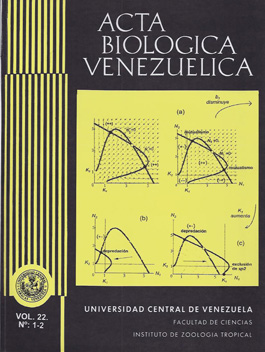ADAPTATION AND SPECIES INTERACTIONS IN SIMPLE FOOD WEBS; THE CASE OF PREDATOR SWITCHING
Palabras clave:
Dynamics of adaptation, fítness gradient, habitat selection, ideal free distribution, predation, switching.Resumen
Jesús Alberto León was one of the first biologists to begin incorporating adaptive change into models of interacting species. This article draws some general lessons about the implications of the dynamics oí adaptation by examining a model in which a predator changes its relative consumption ratos of two prey speeies, given that it cannot consume both al maximal rates. It begins by classifying traits that havc importan! effects on the dynamics of íood webs, and surveys various models oí the dynamics of adaptively changing traits. The model of predator switching between t\vo prc\ is uscd to show the imporlance of both the rules for, and rates of, adaptive change in foraging traits l'or determining the dynamics of the entire system. Contrary to intuition, dynamic switching can desynchronize the fluetuations in the prey species, and forcé the predators diet further from an 'ideal free" distribution of foraging time or effort. The article ends with a discussion of some of the broader implications of these theoretical results and a cali for more empirical work to explore the actual dynamics of rapid modes of adaptive change.


